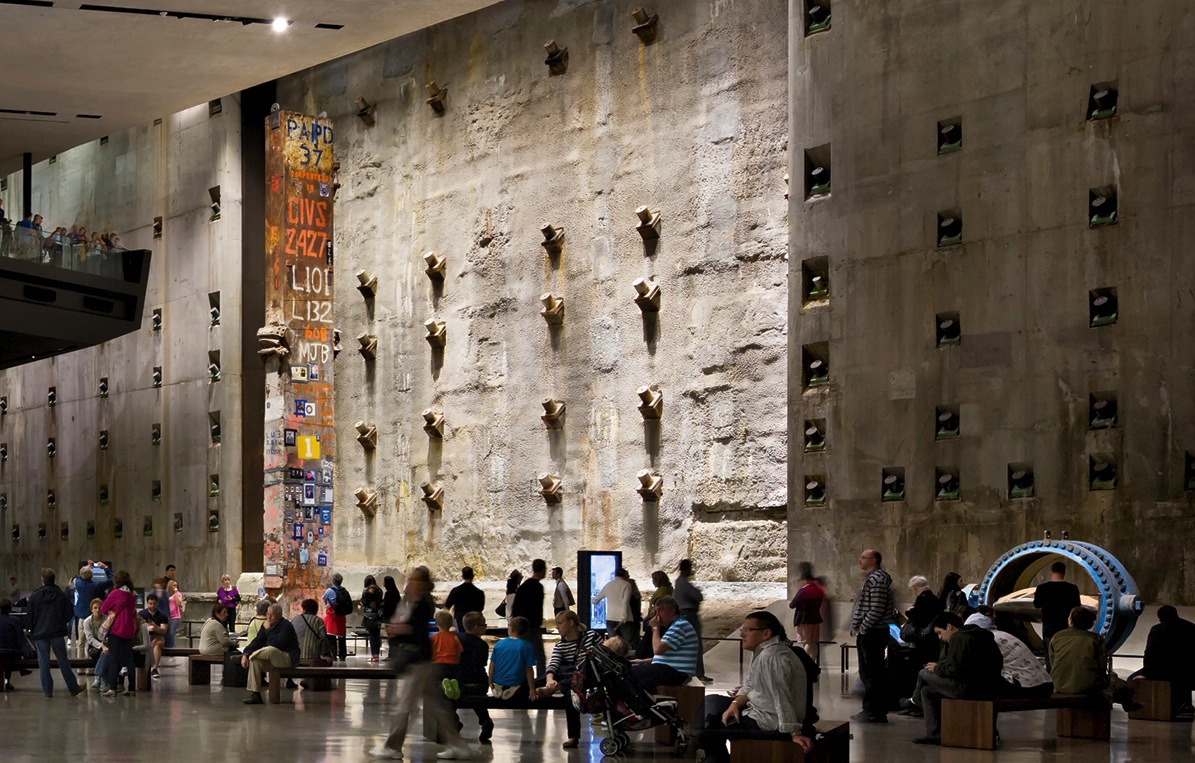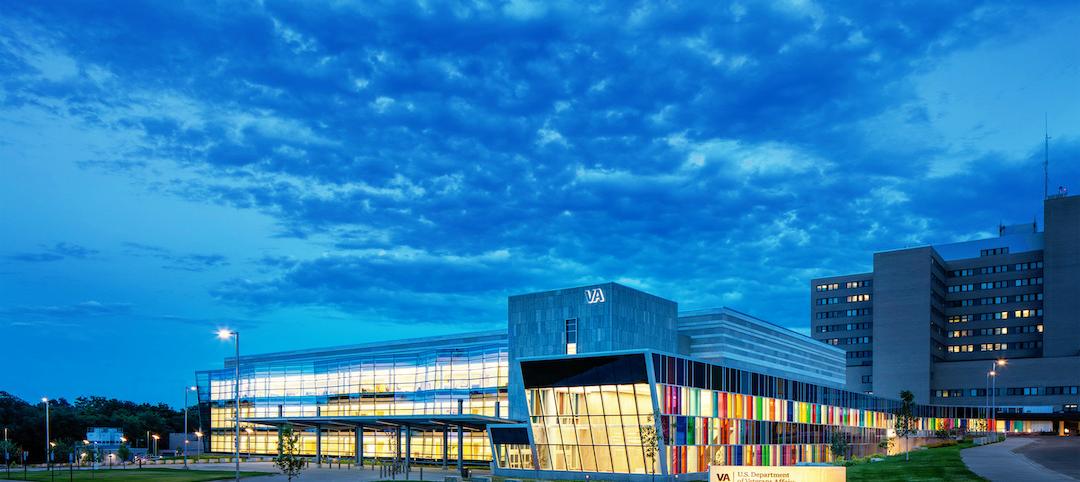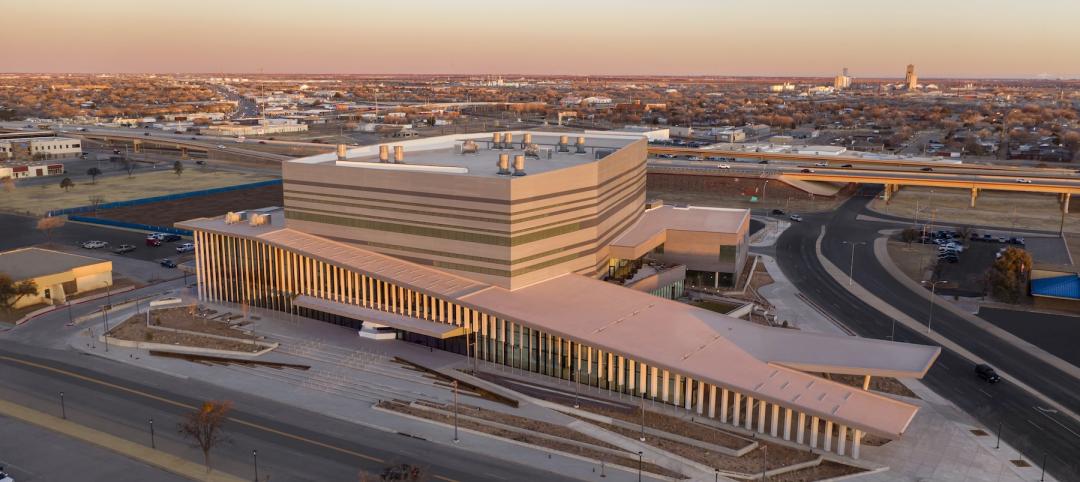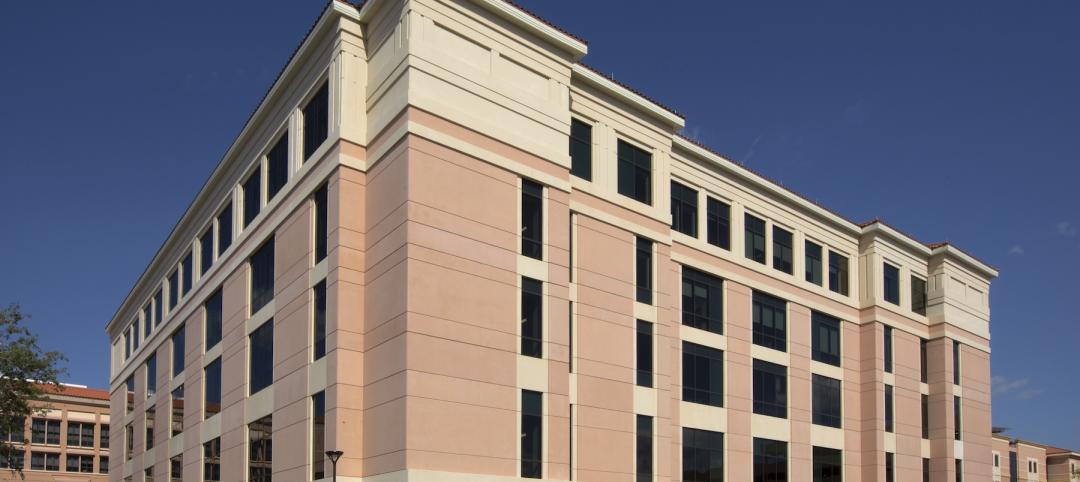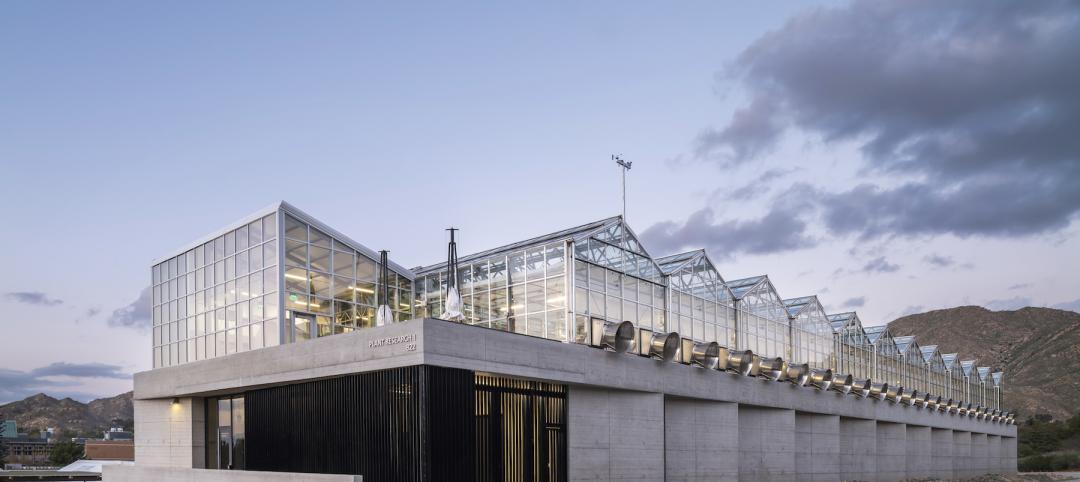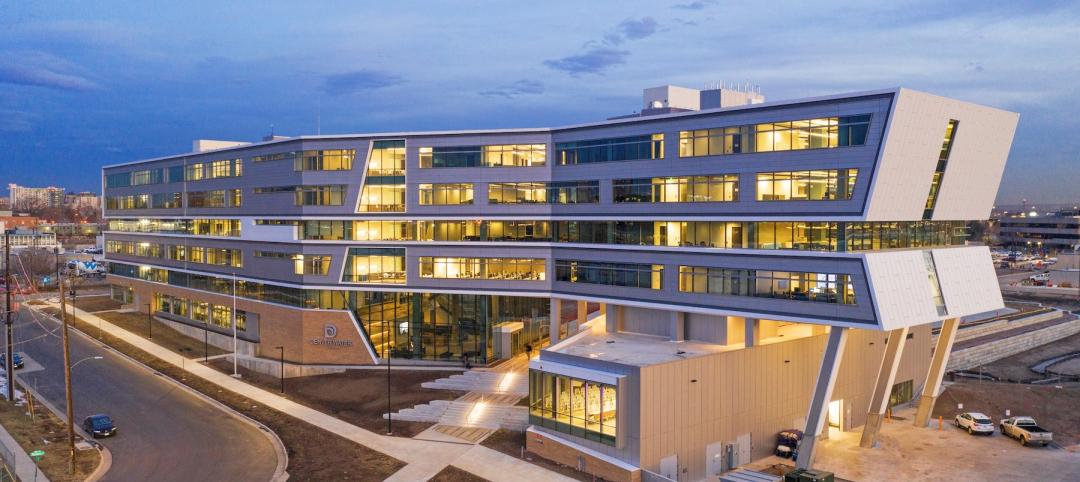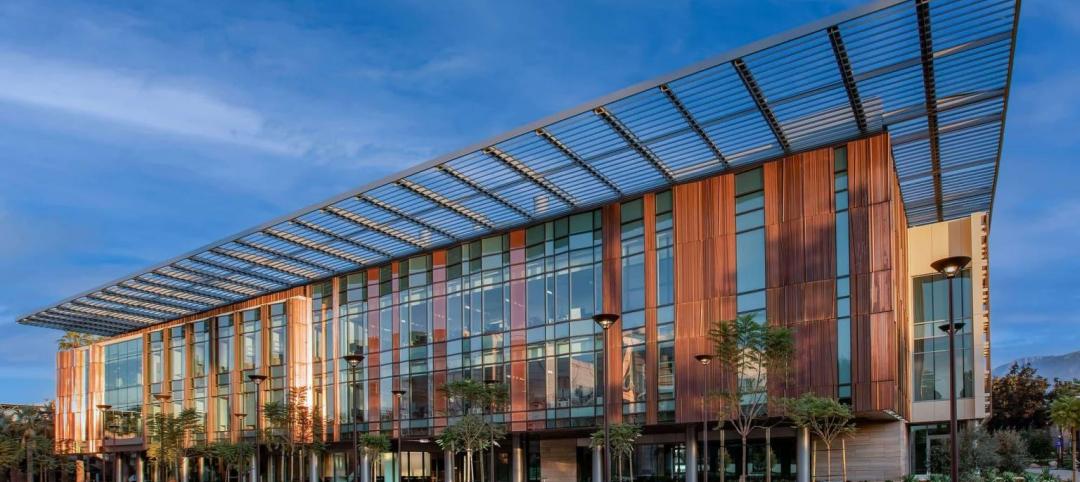The National September 11 Memorial Museum may have been a relatively small part of the 16-acre World Trade Center mega-project, which included the building of four commercial towers and a massive transportation hub. But the museum’s construction was no less complex, and was complicated by enormous—and at times conflicting—political, public, and emotional considerations that ultimately influenced its design, budget, and scheduling.
PROJECT SUMMARY
GOLD AWARD
National September 11 Memorial Museum
New York, N.Y.BUILDING TEAM
Submitting firm: Davis Brody Bond (architect)
Owner/developer: National September 11 Memorial and Museum
Structural engineer: WSP Cantor Seinuk (slurry wall): Simpson Gumpertz & Heger; Guy Nordenson & Associates Structural Engineers
Geotechnical engineer: Langan Engineering & Environmental Services (slurry wall): Mueser Rutledge Consulting Engineers
MEP engineer/vertical transport: Jaros Baum & Bolles
Blast design: Weidlinger Associates
Code consultant: Code Consultants, Inc.
Acoustical/vibration design: Cerami & Associates
Lighting design: Fisher Marantz Stone
Graphic design: C&G Partners
Cost estimating: Faithful + Gould
Historic preservation: Higgins Quasebarth & Partners
Security design: Arup
Building envelope/waterproofing: Wiss, Janney, Elstner Associates
Specifications: Construction Specifications, Inc.
GC/CM: Lend LeaseGENERAL INFORMATION
Project size: 775,000 sf (Museum: 268,000 sf; chiller plant: 163,000 sf)
Construction cost: $700 million (museum and memorial)
Construction period: August 2006 to May 2014
Delivery method: Construction management
“The 9/11 Museum combines all of the building trades, as well as collective memory, bureaucracy, and ideology,” says SmithGroupJJR’s Bill Kline, AIA, EDAC, LEED AP, a Building Team Awards judge. “It is a design and technical achievement in a context fraught with controversy and contradiction.”
The design needed to take into account the various opinions and agendas of more than 30 consulting parties, including government agencies, preservationists, and groups that represented the surrounding community and survivors and victims of the attacks.
Through that process, the Building Team, led by architect Davis Brody Bond, became acutely aware of the importance of preserving certain artifacts of the former Twin Towers, notably its north and south footprints and the remaining slurry wall. The design evolved into a series of spaces that evokes both the scale of the loss and the still-resonant physical impressions left by the towers.
Some of the artifacts—specifically, the “Survivors’ Stair” and “Last Column”—were so large and heavy that GC/CM Lend Lease had to install them in their designated exhibition locations before the walls, floors, and roof could be constructed around them.
The Building Team’s architectural and materials choices centered on enhancing the visitor experience and articulating four core design principles: Memory, Authenticity, Scale, and Emotion.
Within the museum’s excavation are two new insertions: the Tower Volumes, which align with the footprints of the original Twin Towers and the reflecting pools within the 9/11 Memorial; and the Ribbon, a ramp between the Tower Volumes that brings visitors to the bedrock level.
The museum lies 70 feet below street level, beneath the eight-acre 9/11 Memorial that doubles as the museum’s green roof. Politicians had committed to opening the Memorial Plaza on the 10th anniversary of the attacks. So the museum and memorial needed to define project boundaries and coordinate shared superstructure and site utilities for economy and logistics, as well as coordinate project schedules and shared costs.
Project planning and coordination also helped avert what could have been a crippling blow when Hurricane Sandy blew into New York in late October 2012.
The superstorm flooded the primary level of the museum with eight feet of water, threatening to delay the museum’s opening by six months. By adjusting work schedules and reallocating work forces to higher levels of the museum while flood remediation was under way, the cleanup and reconstruction efforts were completed in only three months.
In that process, the cooperation of the full Building Team, including materials suppliers, vendors, and fabricators, minimized Sandy’s impact and helped this project hit its completion target.
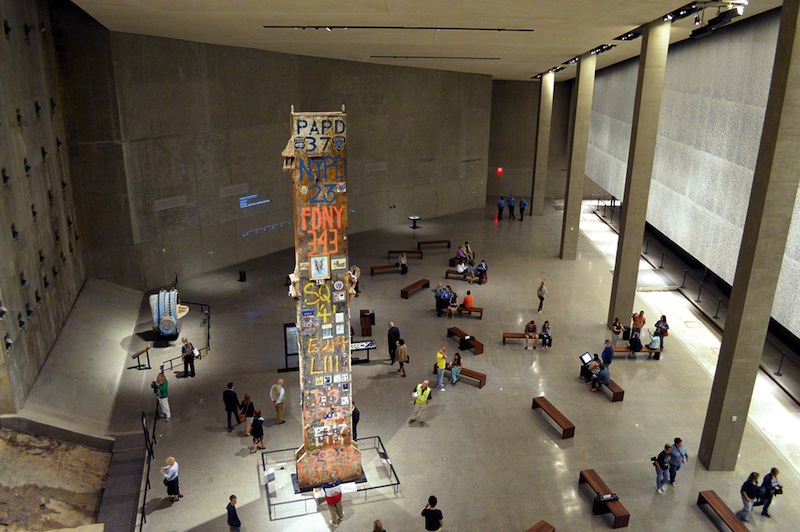 The Last Column needed to be lowered into its position before the street-level Memorial Plaza could be completed.
The Last Column needed to be lowered into its position before the street-level Memorial Plaza could be completed.
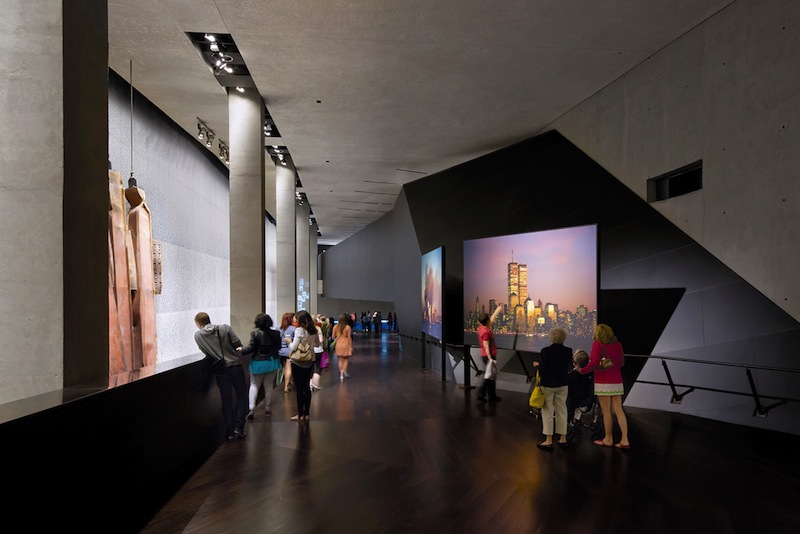 Visitors to the museum enter its main spaces through a ramped descent that offers them “Progressive Disclosure” of exhibits that are not quite close enough to touch and, therefore, enhance “Emotion,” one of the museum’s four core design principles, along with Memory, Authenticity, and Scale.
Visitors to the museum enter its main spaces through a ramped descent that offers them “Progressive Disclosure” of exhibits that are not quite close enough to touch and, therefore, enhance “Emotion,” one of the museum’s four core design principles, along with Memory, Authenticity, and Scale.
Related Stories
| Aug 29, 2022
Montana becomes first U.S. state to approve 3D printing in construction
Montana is the first U.S. state to give broad regulatory approval for 3D printing in building construction.
Architects | Apr 22, 2022
Top 10 green building projects for 2022
The American Institute of Architects' Committee on the Environment (COTE) has announced its COTE Top Ten Awards for significant achievements in advancing climate action.
Concrete Technology | Apr 19, 2022
SGH’s Applied Science & Research Center achieves ISO 17025 accreditation for concrete testing procedures
Simpson Gumpertz & Heger’s (SGH) Applied Science & Research Center recently received ISO/IEC17025 accreditation from the American Association for Laboratory Accreditation (A2LA) for several concrete testing methods.
2021 Building Team Awards | Jan 14, 2022
First public-private partnership project in Veterans Administration history saves $34 million in costs
LEO A DALY and McCarthy Building Companies head the project team for the Omaha VA Ambulatory Care Center in BD+C’s 2021 Building Team Awards.
Building Team Awards | Dec 8, 2021
A performing arts center celebrates a legendary rocker and his birthplace
Buddy Holly Hall in Texas receives BD+C’s Silver Building Team Award.
Building Team Awards | Dec 7, 2021
A rapid response to a health emergency
Baptist Hospital of Miami’s 233-bed Hope Tower receives BD+C’s Bronze Building Team Award
Building Team Awards | Dec 3, 2021
Putting science on display, thanks to a design-build approach
UC Riverside’s Plant Growth Environments Facility receives BD+C’s Bronze Building Team Award.
Building Team Awards | Dec 2, 2021
An academic ‘precinct’ brings arts and sciences together
Wofford College’s Chandler Center for Environmental Studies receives BD+C’s Silver Building Team Award.
Building Team Awards | Dec 1, 2021
Denver sets the bar for water reclamation and reuse
A new administration building for the city’s water utility company scores Platinum in BD+C’s 2021 Building Team Awards.
2021 Building Team Awards | Nov 17, 2021
Caltech's new neuroscience building unites scientists, engineers to master the human brain
The Tianqiao and Chrissy Chen Institute for Neuroscience at the California Institute of Technology in Pasadena wins a Gold Award in BD+C's 2021 Building Team Awards.


